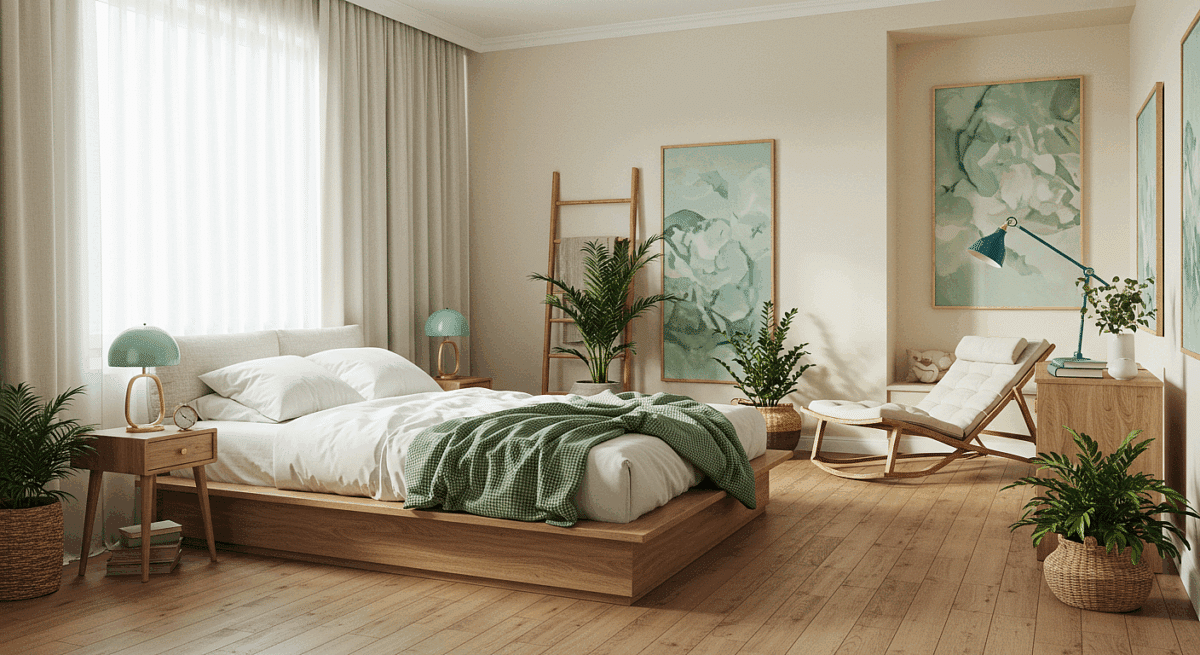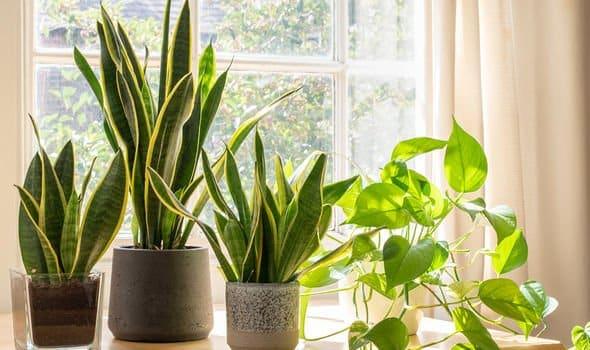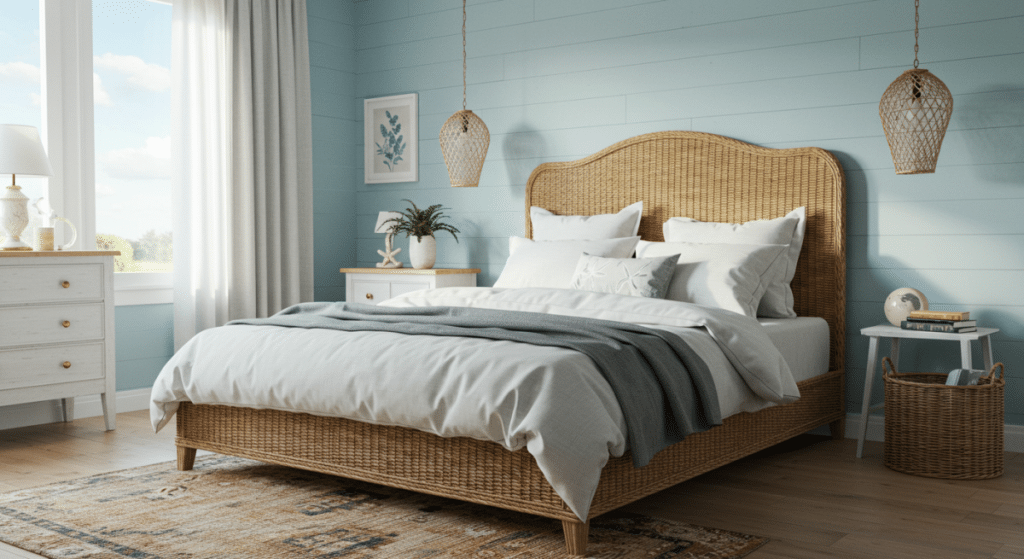People today sleep 90 minutes less than they did a century ago. This statistic shows how our modern lifestyle cuts into our valuable rest time.
Your bedroom’s impacts more than just looks—it affects your wellbeing. A comfortable and calming space leads to better sleep. Research shows soft textures should cover about 50% of your bedroom to create a cosy atmosphere. The colours you choose are vital too. Earthy, stone-inspired shades work great as a starting point. Darker shades like Acai Berry help create a peaceful environment by absorbing light.
Your bedroom should be your sleep sanctuary. A clutter-free space helps your mind relax. Natural elements can make a big difference. Plants improve both your room’s look and air quality while adding a sense of calm. The right lighting sets a peaceful mood too.
This piece will show you expert-backed ways to turn your bedroom into a peaceful retreat. You’ll get back those lost hours of sleep and wake up feeling refreshed.
Choose the Right Colours for Calm
Your bedroom’s colour choices can affect your sleep quality by a lot. Research shows 40% of adults face sleep problems at some point in their lives. The right colours create a truly relaxing environment.
Understanding calming bedroom colours
Colours trigger specific emotions and psychological responses that subtly influence your sleep environment. Blue and green stand out as the most calming colours, backed by science. These colours remind us of nature.
The Sleep Foundation’s research confirms blues, greens, and whites help you sleep better. These colours lower your heart rate and lower your blood pressure, making bedtime relaxation easier.
Best paint shades for a tranquil bedroom
Here are some expert-backed colours to create your peaceful bedroom retreat:
Blues: Soft sky blue to deep navy creates a calming effect like water. People sleep longer in blue bedrooms compared to rooms with other colours.
Greens: Sage, mint, and forest greens bring comfort and renewal. Nature-inspired green reduces anxiety and boosts wellbeing.
Neutrals: Beige, taupe, and ivory add sophisticated warmth. These adaptable shades create an inviting and refined atmosphere.
Soft pinks: These gentle shades work surprisingly well. They offer comfort without dominating the space.
Light greys: Modern and minimalist grey creates a clean, contemporary feel while keeping the room calm.
How to combine colours for a cosy feel
After picking your main bedroom colour, you need thoughtful combinations. The split wall technique works well – paint the lower third in a deeper shade and the upper part in a lighter matching tone.
You could try “colour drenching” by using a single shade on walls, woodwork and ceiling. This creates a cosy cocoon effect. If you like contrast, try soft grey walls with pastel pink accessories or pair sage green with grey furnishings.
Your bedroom should match your idea of restfulness. You might prefer darker tones for dramatic cosiness or lighter shades for airy calm.

Declutter and Simplify Your Space
A messy bedroom does more than look bad—it messes with your sleep and makes you stressed out. You need a clean, simple space to get the rest you deserve.
Why clutter affects your sleep
Research links bedroom clutter to poor sleep quality. People who live in cluttered homes are by a lot more likely to have insomnia and sleep problems. Your brain gets overwhelmed when visual chaos competes for attention, which makes it hard to relax. More than that, clutter raises cortisol—our main stress hormone—and throws off your natural sleep-wake cycle. A study showed that women who saw their homes as cluttered had unhealthy cortisol patterns. This affected their ability to relax at bedtime.
Smart storage ideas for a tidy room
The right storage can revolutionise your bedroom into a peaceful haven:
- Ottoman beds and under-bed storage: These give you lots of hidden space without losing style. They work great for seasonal clothes or extra bedding. Under-bed drawers are a great alternative to regular dressers.
- Fitted wardrobes: These use all your floor-to-ceiling space while looking uninterrupted. They adapt to your room’s size and fit into tough spots perfectly.
- Bedside solutions: Instead of crowding bedside tables, decorative trays can gather small items like jewellery or watches. Wall-mounted hooks and narrow shelves keep things handy without taking up valuable surface space.
Minimalist decor tips for a relaxing bedroom
Minimalist bedroom design focuses on simplicity, function, and beauty. This style lets your personal taste shine through carefully picked items. Keep surfaces clear on purpose, with just a few special pieces—maybe a handmade ceramic vase or gentle candle—to add character without mess.
Pick furniture with simple shapes and refined finishes that serve clear purposes. Natural textures and fibres soften the look while keeping things cosy. Putting furniture closer to the floor creates taller-looking ceilings and more open space. This simple approach creates a bedroom that feels peaceful, spacious and truly refreshing.
Use Lighting and Scent to Set the Mood
The right mix of lighting and fragrance can revolutionise your ordinary bedroom into a sleep-inducing sanctuary. You’ll notice better quality rest and true tranquilly with the perfet combination.
Warm vs cool lighting: what works best
Light plays a crucial role in your sleep-wake cycle. Studies show that warmer red, orange, and yellow hues help you prepare for bedtime better than cooler blue tones. Red light improves sleep quality without affecting circadian rhythms, unlike its blue counterpart. Blue, violet, and green light make your body produce less melatonin, so they don’t belong in the bedroom.
Layered lighting ideas for a cosy bedroom
A well-designed bedroom needs depth through layered lighting that includes:
- Ambient lighting – soft ceiling fixtures provide overall illumination
- Task lighting – bedside lamps give focused light for reading
- Accent lighting – decorative elements add character
Your bedroom will feel cosier with dimmers and warm white bulbs (2700K–3000K). The best practise is to switch off overhead lights an hour before bed and use only warmer accent lighting to help your body prepare for sleep.
Using candles and diffusers for relaxation
Scent shapes your bedroom’s atmosphere significantly. Naturally calming essential oils like lavender, chamomile and sandalwood can enhance relaxation. Battery-operated candles create soothing flickering light without any safety risks. Reed diffusers work great too – they release continuous fragrance through porous reeds without needing maintenance.
Add Natural Touches and Remove Distractions
Natural materials and tech-free spaces are key to creating truly peaceful bedroom environments that offer both physical benefits and help you relax mentally.
Benefits of natural materials in bedding
Natural fibres work better than synthetic alternatives in many ways. Organic wool naturally controls temperature and wicks away moisture. It absorbs up to 30% of its weight and stays dry. Natural latex supports your body perfectly and spreads weight evenly. Bedding made from natural sources creates a healthier sleep environment because it doesn’t contain synthetic chemicals, flame retardants, or volatile organic compounds that you often find in artificial materials. These natural options last longer too and keep their shape better over time.
How to create a tech-free sleep zone
Research shows 70% of adults use electronic devices in their bedroom or bed. This common habit makes it harder to get quality sleep. The blue light from electronic screens stops melatonin production and messes with your body’s natural sleep cycle. You can create a tech-free bedroom by setting up a charging station outside your sleeping area. A simple alarm clock can replace your phone alarm and remove the urge to check notifications. Sleep experts say that picking a regular time to turn off screens helps your brain connect your bedroom with rest.
Incorporating plants for a calming effect

Plants in your bedroom boost your mood and lower stress levels. They look great and some types clean the air by absorbing pollutants. Snake plants and peace lilies give off oxygen at night, which can make the air fresher while you sleep. Lavender plants deserve special attention because their soft scent helps you relax and sleep deeper. Even fake plants on room dividers can change your bedroom’s feel and create a peaceful green space.
Conclusion
Your bedroom needs to become a sleep sanctuary, and this takes careful planning with several important elements. Science has proven that blues, greens, and soft neutrals help people sleep better and relax more. A clutter-free space with these calming colours creates the perfect foundation for peace and quiet.
A simple design makes your sleep space more effective. Your stress hormones increase when you see visual clutter, which affects your sleep patterns. Smart storage and minimal décor aren’t just style choices – they’re tools you need for better sleep. The bedroom should feel like your escape from the world outside.
The right lighting sets the mood, especially with warm lights placed throughout the room. Warm tones work better than harsh blue light because they support your natural sleep cycle without affecting melatonin. On top of that, natural scents from essential oils or plants help you relax more before bed.
Natural materials should be your first choice in the bedroom. Organic fabrics help control temperature better and create a healthier space without synthetic chemicals. You should keep electronic devices out of the bedroom because their blue light and mental stimulation prevent good rest.
Sleep helps us stay healthy, but our modern lifestyle keeps chipping away at this vital resource. Your bedroom redesign isn’t just about decoration – it’s an investment in your health. The space you create affects how well you sleep and shapes your daily well-being. These design principles can help you get back those lost hours of sleep and wake up feeling fresh to start each day.
Key Takeaways
Transform your bedroom into a sleep sanctuary with these expert-backed design principles that directly impact your rest quality and overall wellbeing.
• Choose calming colours like blues, greens, and soft neutrals—research shows blue bedrooms promote longer sleep duration than other colour schemes.
• Declutter ruthlessly as visual chaos increases cortisol levels and disrupts sleep patterns; use smart storage like ottoman beds and fitted wardrobes.
• Layer warm lighting (2700K-3000K) with dimmers and avoid blue light an hour before bed to support natural melatonin production.
• Create a tech-free zone by removing electronic devices—70% of adults use screens in bed, significantly impairing sleep quality.
• Incorporate natural materials like organic wool bedding and air-purifying plants such as snake plants to create a healthier sleeping environment.
Your bedroom design isn’t just about aesthetics—it’s a fundamental health investment. With modern life reducing our sleep by 90 minutes compared to a century ago, these evidence-based changes can help you reclaim those lost hours and wake up genuinely refreshed.

